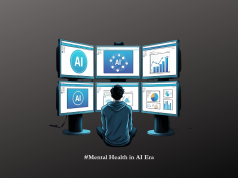In the glossy narrative of success, career advancement is often portrayed as an unalloyed good — the sought-after prize in the tournament of ambition. Yet, beneath the surface of title promotions and salary bumps lie hidden costs, financial quicksands that can ensnare the unwary climber. At The Work Times, we dig into the less-discussed side of professional achievements: the financial planning challenges in a high-stakes career.
For many ascending the corporate ladder, the first hurdle comes with the need for continuous professional development. It’s not just about the occasional seminar or certification; in today’s rapidly evolving business landscape, staying relevant means an ongoing investment in learning. From advanced degrees to specialized training programs, this intellectual capital often comes with a hefty price tag — and the expectation that you’ll pay out-of-pocket for the privilege of becoming more valuable to your employer.
Then there’s the cost of image. In a culture where appearance can influence perceptions of competence and confidence, professionals are pressured to invest in a wardrobe that aligns with their executive role, often incurring significant expenses to project the ‘right’ image. And it’s not only the attire; from grooming services to high-end accessories, the cost of maintaining an executive presence can quietly drain resources.
As salaries increase, so too do taxes. Many professionals find themselves unprepared for the jump to a higher tax bracket, which can take a substantial bite out of their pay increases. Without proper planning and advice from a competent financial advisor, they might miss opportunities for tax efficiency, thereby losing a portion of their hard-won gains to avoidable taxation.
Burnout is another insidious cost. The relentless pace and pressure of a high-powered job can lead to both physical and mental health issues. The consequent medical bills and therapy costs, not to mention the possible loss of income if extended time off is needed, can be substantial and unexpected. And while health insurance may cover some of these expenses, it often doesn’t account for the whole picture.
What, then, is the ambitious professional to do? Awareness is the first step. Recognizing these hidden costs empowers you to plan strategically. Budgeting for education, wardrobe, and wellness is as important as saving for retirement. Moreover, smart investment strategies that align with career growth trajectories can help build personal assets resilient to the financial pressures of a high-stakes career.
Workplace culture also plays a critical role in informed financial decision-making. Cultures that encourage balance and provide support for continuous learning and health can significantly mitigate these hidden costs. As employers, fostering such an environment is not just beneficial for the workforce; it is an investment in the company’s own sustainability and success.
In conclusion, as you map your path to professional prominence, it’s crucial to consider the full spectrum of financial implications. With thoughtful planning and a proactive approach to managing the hidden costs of career advancement, you can ensure that your financial health grows in tandem with your career. For our readership — who appreciate the deep dives of The Washington Post, the narrative flair of The New Yorker, and the thorough analysis of The New York Times — we offer these insights as a compass for navigating the treacherous yet rewarding terrain of a high-stakes career.
Embark on this climb with eyes wide open. Let your ambitions soar, but tether them with the wisdom of financial foresight. Only then can you reach the apex, not just of your career, but of personal financial success.




























